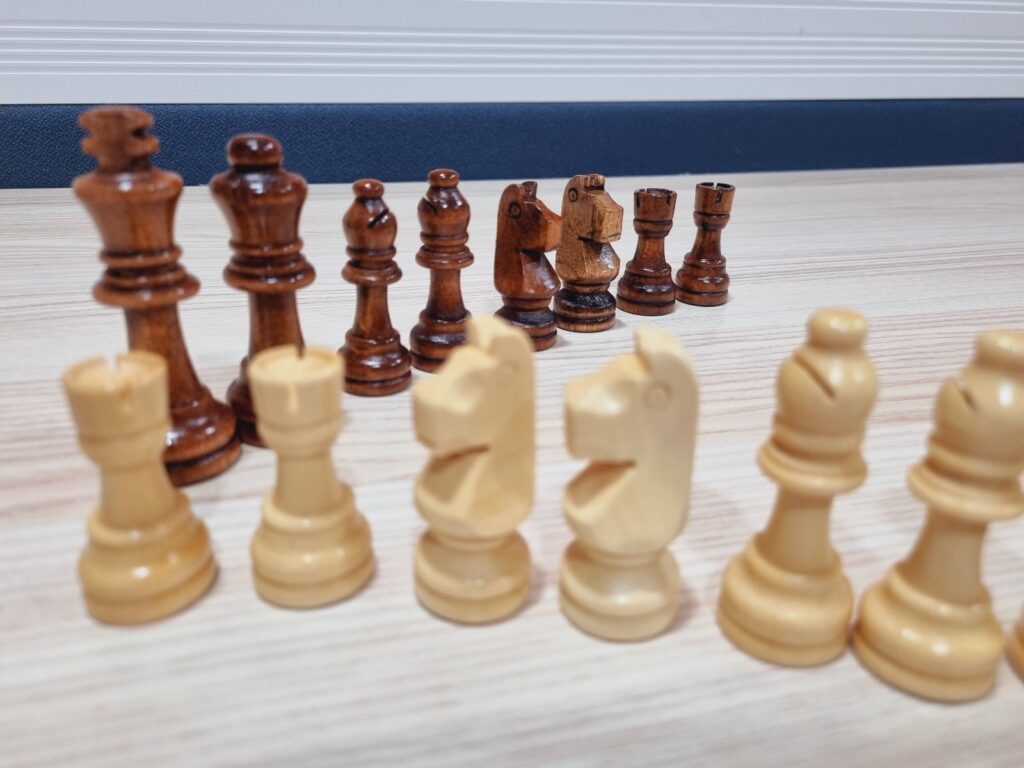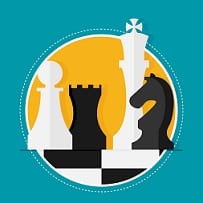
Although the variation of the chess pieces’ material has no impact on the game rules, it’s become not only a subject of debate among scholars, historians, and archaeologists – but also a point of interest to players.
The most accepted information regarding the evolution of pieces points out that the oldest set ever found was a ‘Chatrang’, or ‘Chaturanga’, one dated from 760 AD.
The set was discovered alongside a coin dated 761 AD in Afrasaib, Uzbekistan, which helped to pinpoint the age of the pieces and maybe some years behind a piece found in an old Byzantine or Roman palace in Butrint, an ancient Mediterranean city in the current territory of Albania.
The piece, less than two inches high, is made of ivory and is dated to 465 AD, which even challenges the known age of chess. However, since it still hasn’t been proven that the piece indeed belongs to a chess set, the Chatrang set, also made of ivory, remains the oldest in history.
Changes Over Time
Only when chess arrived in European lands, sometime in the 10th century, that the material seem to change, turning into a combination of bone and ivory.
The Isle of Lewis chess pieces, one of the most famous sets in the history of European chess were made of walrus tusk and believed to have come from what today is Iceland.
Later on, the Charlemagne chess pieces were found to be also made of ivory, confirming the hypothesis that this was indeed the preferred material for chess sets.
Why Are Chess Pieces Sometimes Made Of Marble?
The trend lasted until 1806 when an Elgin marble chess set was discovered in the Parthenon frieze and was taken to England.
While that seemed to bring a grand novelty in the design of chess pieces, ivory came back to the table with the Jacques of London sets. So, why is marble still sometimes used to make chess pieces?
Disregarding the fact that the most famous chess sets were made of other materials, wood remains until today the most common one due to its exquisite combination of durability, heft, solidity, and aesthetics.
However, marble sets are seen as more sophisticated, and that is the main reason why this material is still used.
Moreover, policies aiming at the eradication of the ivory trade due to the unrestricted, unchecked poaching of elephants also help make this a less ethical material for chess pieces.
Is Marble A Good Chess Piece Material?
Regarding its properties, marble is better to craft than other materials due to its even grain characteristics, which allow thinner cuts and different shapes if compared to other materials.
Also, marble pieces are easier to find, even in separate parts, meaning that substitutes for broken marble pieces can be found without a hassle. On the flip side, marble breaks easier than wood due to its lack of flexibility and tends to be more expensive.
In the end, it’s a matter of preference, but if you prefer marble chess sets, rest assured they will still be manufactured for a long time.


